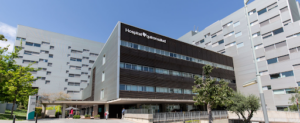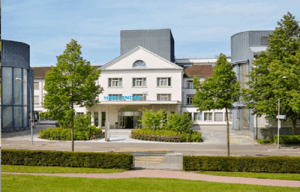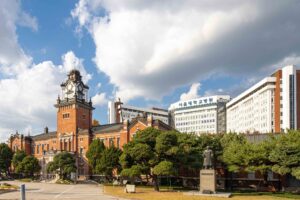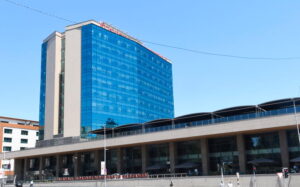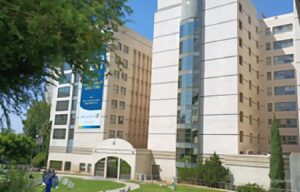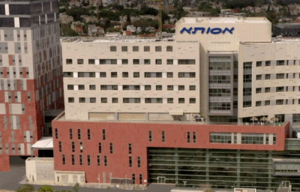Dental implantation
Dental implantation is necessary in cases of complete loss (extraction) of a natural tooth to restore the dentition. In recent years, it has become a fairly routine procedure. According to the American Academy of Implant Dentistry, more than 3 million people undergo it annually in the United States alone.
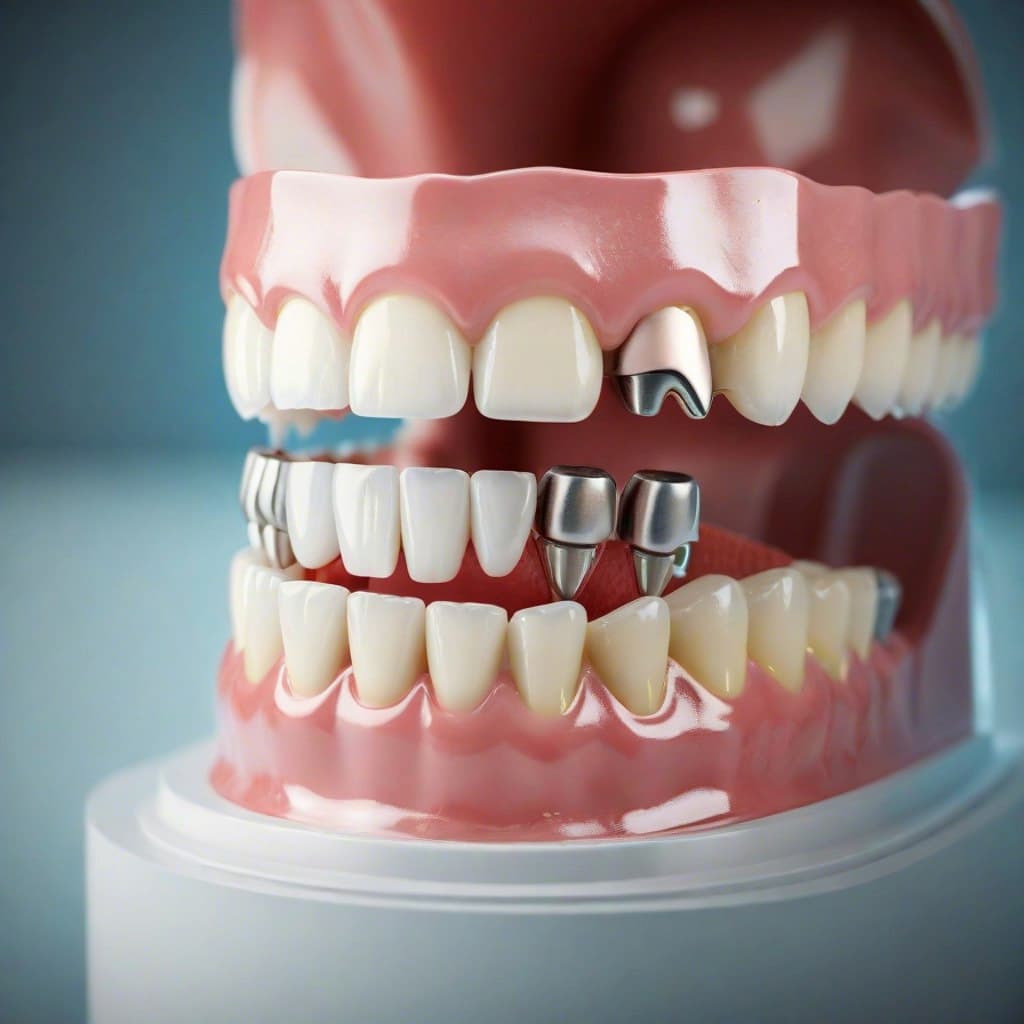
Doctors can perform dental implantation in one or two stages. In the first case, the implant is placed immediately after tooth extraction, before new bone tissue has formed. In the classical two-stage technique, the implant is first placed into the bone with a healing period of 3 to 6 months, after which the gum is reopened and a solid cylindrical structure is installed. The final step is placing a permanent prosthesis on it.
It is important to note that the implant material in the smile zone should differ from that in the chewing area: nowadays, foreign dentists place implants with ceramic or zirconia abutments instead of titanium ones. When the gum recedes, such implants do not show through the soft tissue, ensuring a natural-looking smile.
An innovative implantation method abroad is the use of the robot-assisted ROBODOC technology. It helps the specialist position implants correctly and adjust them in relation to other teeth with greater precision.
Full-arch prosthetics on four implants, also known as All-on-4, is one of the options for replacing all teeth without the need to implant each one separately. Essentially, it is a unique technology that allows the comfortable use of four fixed titanium prostheses anchored to the jaw. This does not require additional maintenance and avoids the inconvenience of cleaning or removing conventional dentures. A similar approach is used in All-on-6 prosthetics, with the only difference being the number of dental implants: 2 are placed in the bone in the area of the front incisors, 2 in the lateral sections of the jaw, and the remaining 2 vertically or at an angle on each side of the jaw relative to the tooth axis.
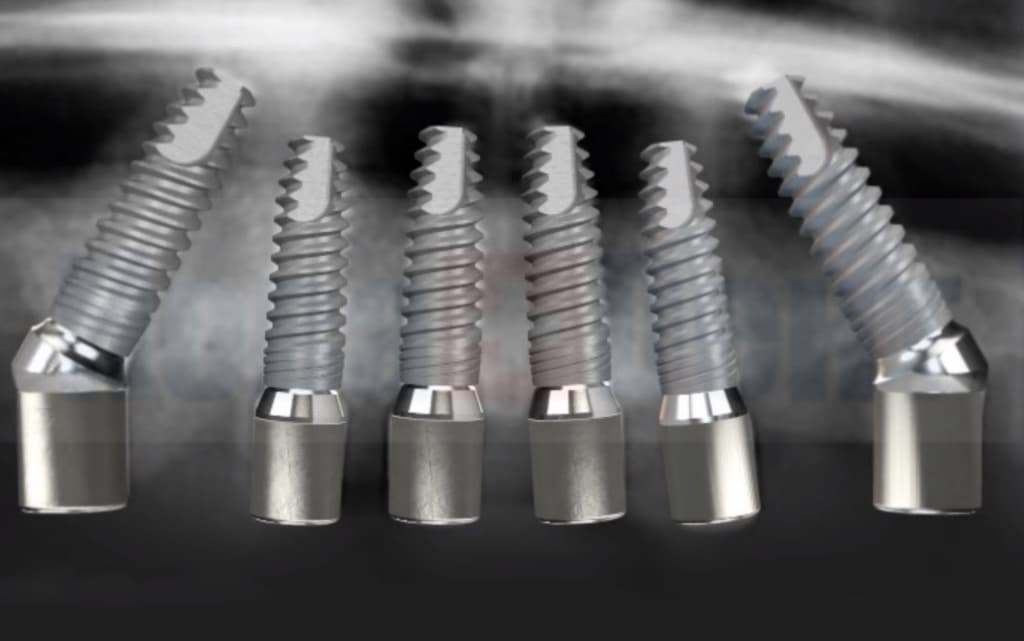
Foreign dentistry places special emphasis on new technologies in bone tissue restoration. For example, clinics in Switzerland have long been using the sinus lift method, typically for elderly patients who most often have jawbone defects preventing tooth implantation. During this short surgical procedure, access is made to the sinus area, where a bone graft material is placed. Over time, it dissolves and is replaced by the patient’s own bone.
Another example is the installation of a titanium membrane — a thin protective mesh. It is non-allergenic and serves as a framework indispensable for tooth extraction and the augmentation of the patient’s own bone tissue for subsequent implantation.
Procedures
Top clinics
-
 Antalya, Turkey Medical Park Antalya Clinic
Antalya, Turkey Medical Park Antalya Clinic -
 Dubai, UAE NMC Healthcare
Dubai, UAE NMC Healthcare -
 Milan, Italy San Raffaele University Hospital
Milan, Italy San Raffaele University Hospital -
 Dubai, UAE American Hospital Dubai
Dubai, UAE American Hospital Dubai -
 Abu Dhabi, UAE Burjeel Hospital Abu Dhabi
Abu Dhabi, UAE Burjeel Hospital Abu Dhabi -
 Vienna, Austria Debling Private Clinic
Vienna, Austria Debling Private Clinic -
 Dubai, UAE Burjeel Hospital Private Multidisciplinary Clinic
Dubai, UAE Burjeel Hospital Private Multidisciplinary Clinic -
 Vienna, Austria Wiener Privatklinik (WPK)
Vienna, Austria Wiener Privatklinik (WPK) -
 Incheon, South Korea Gil Medical Center at Gachon University
Incheon, South Korea Gil Medical Center at Gachon University -
 Montreux, Switzerland Clinique La Prairie
Montreux, Switzerland Clinique La Prairie -
 Barcelona, Spain QuironSalud Barcelona Hospital
Barcelona, Spain QuironSalud Barcelona Hospital -
 Barcelona, Spain Medical Center "Teknon"
Barcelona, Spain Medical Center "Teknon" -
 Barcelona, Spain Sant Joan de Deu Children's Hospital
Barcelona, Spain Sant Joan de Deu Children's Hospital -
 Barcelona, Spain University Hospital Barnaclinic+
Barcelona, Spain University Hospital Barnaclinic+ -
 Zurich, Switzerland Hirslanden Clinic
Zurich, Switzerland Hirslanden Clinic -
 Madrid, Spain Quiron Salud University Hospital
Madrid, Spain Quiron Salud University Hospital -
 Seoul, South Korea Samsung Medical Center
Seoul, South Korea Samsung Medical Center -
 SNUH
SNUH -
 г. Женева, Швейцария Клиника «Женераль-Болье»
г. Женева, Швейцария Клиника «Женераль-Болье» -
 г. Стамбул, Турция Университетская клиника «Медиполь Мега»
г. Стамбул, Турция Университетская клиника «Медиполь Мега» -
 г. Стамбул, Турция Клиника Флоренс Найтингейл
г. Стамбул, Турция Клиника Флоренс Найтингейл -
 г. Иерусалим, Израиль Медицинский центр “Хадасса”
г. Иерусалим, Израиль Медицинский центр “Хадасса” -
 г. Петах-Тиква, Израиль Медицинский центр имени Ицхака Рабина
г. Петах-Тиква, Израиль Медицинский центр имени Ицхака Рабина -
 г. Тель Авив, Израиль Медицинский центр “Ассута”
г. Тель Авив, Израиль Медицинский центр “Ассута”










